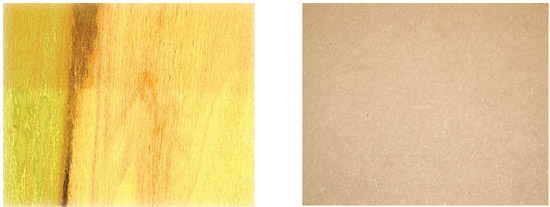What Architects Need to Know About Specifying Wood Doors
Fire-retardant core. Made from a non-combustible material, typically gypsum based, fire-retardant cores must meet rigorous smoke, flame, and pressure tests, and are available up to 90-minute positive pressure ratings required to meet building fire codes for the life safety of building occupants.
Specialty construction cores. These cores are available for acoustic and lead-lined doors. Acoustical doors may range in thickness from 1¾ inches to 2¼ inches and are constructed to provide increased acoustical performance over standard core materials, though Sound Transmission Class (STC) ratings vary by manufacturer and type of construction. However, STC doors do require lite kits to be factory installed, and pairs of doors will void STC ratings. Lead can be applied to doors under the crossbanding material to provide radiation protection, with lead thickness varying by specific application requirements.
Stiles and Rails
Stiles and rails are composed of SCL, hardwood, or softwood materials, with SCL providing the best screw-holding capabilities and stability. Inner SCL stiles with matching outer hardwood stiles will meet both performance and aesthetic expectations.
Crossbands
Crossbands are applied to prevent telegraphing of the stile and rail through the face material and provide stability to the door. A crossband is a ply placed between the core and face veneer in five-ply construction and a ply placed between the back and face of a three-ply skin in seven-ply construction. Natural wood crossband materials are not recommended since colors may range from white to very dark, which could show through on light veneers. In addition, voids and lapped crossbands can occur, which are not acceptable under WDMA standards. Engineered wood crossbands, commonly made from high-density fiberboard (HDF), are durable, meet all industry standards, and have a uniform quality and appearance that will not show through the veneer. With this option, the possibility of delamination is eliminated with the consistent surface.
 |
Crossbands: A Comparison Images courtesy of VT Industries, Inc. |









